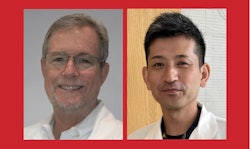Experts to explore astrocytes’ role in central nervous system repair

Presenters will discuss the emerging role of astrocytes for augmenting brain recovery in ischemic stroke in the “Paracrine Protection by Neurons by Astrocytes in Ischemic Stroke” session.
“One novel idea we’ll explore is that astrocytes secrete substances that protect neurons during stroke,” said Patrick Lyden, MD, professor of physiology and neuroscience at the Zilkha Neurogenic Institute of USC in Los Angeles.
Dr. Lyden’s presentation will focus on the direct paracrine protection astrocytes may provide by communicating calcium oscillations and other complex and interdependent signalling pathways and fundamental mechanisms.
Astrocytes comprise the major non-neuronal cell population in the mammalian neurovascular unit, which is a complex multicellular structure consisting of endothelial cells, neurons, glia, smooth muscle cells and pericytes.
Traditionally, these glial cells play broad roles in central nervous system (CNS) homeostasis, including managing extracellular ion balance and pH, regulating neurotransmission and controlling cerebral blood flow and metabolism. Astrocytes are also known for their bad reputation.
“We know that astrocytes get activated during stroke and make a glial scar; that glial scar kills neurons,” Dr. Lyden said. “Within the last year or two, however, recent data has begun demonstrating the functional properties of astrocytes and their contribution to injury and repair after CNS injury and disease.”
The session for both scientists and clinicians will also include a discussion of another surprising new mechanism in the neurovascular unit: the capability of astrocytes to release and transfer mitochondria into adjacent neurons.
“The endogenous mitochondrial transfer mechanism gives us a hint to utilize isolated mitochondria transplantation for brain protection and repair,” said presenter Kazuhide Hayakawa, PhD, assistant investigator of radiology at the Mass General Research Institute in Boston and assistant professor of radiology at Harvard Medical School.
“Astrocytes are one of the important cell types in the brain allowing us to promote brain recovery after ischemic stroke. Hopefully, astrocyte-originated mitochondria or its mitochondrial component transplants may become a novel therapeutic intervention in stroke.”
The robust session will conclude with a discussion on how treatments may inadvertently suppress astrocyte-neuron interactions, which may partly explain some previous clinical translational failures.
“When we ignore the functional properties of astrocytes, we inadvertently cause harm either because we suppress the magic from astrocytes or we promote astrocyte activation in the wrong direction,” Dr. Lyden said.






